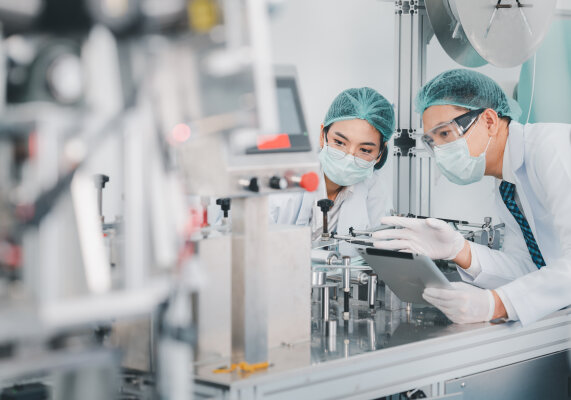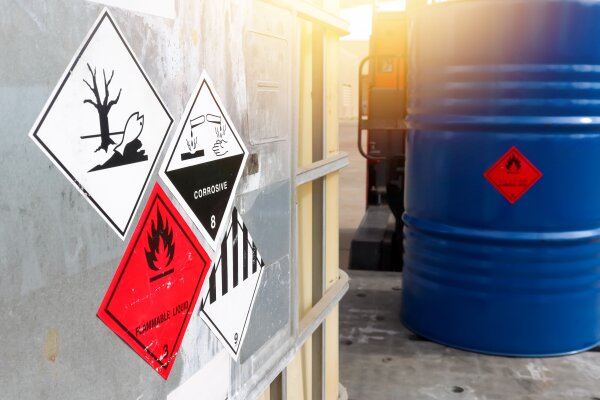The vacuum pump - valuable tool in laboratories and process technology

Whether for filtration, distillation or drying, for concentration or evaporation - vacuum pumps are elementary companions in the modern laboratory routine. They are also used for liquid extraction in solid phase extraction and as rotary evaporators. There are different types of pumps for each type of application. This and more makes the vacuum pump so important in the laboratory:
As the name suggests, the primary purpose of the vacuum pump is to technically create a vacuum. Basically, vacuum pumps are differentiated according to their technology as well as the vacuum they generate.
The most important vacuum pump types
-
Screw pumps
-
Rotary vane pumps
- Diaphragm pumps
Over time, various types of vacuum pumps have become established, and the requirements placed on the models have also increased. Several factors also play a significant role, such as biological safety standards, explosion protection, as well as the well-designed supply of several laboratory workplaces through locally implemented vacuum pump networks.
Classic applications
In everyday laboratory work, pH-neutral water, buffer systems, substances to be dissolved and other solvents are mainly used. If you work primarily in the rough vacuum range with aqueous media, an oil-free diaphragm pump is ideal. It is important here that the segments in contact with the media are made of high-quality aluminum. If, on the other hand, you use aggressive substances, you should opt for a functional chemistry diaphragm pump. Models of this type are often treated with chemical-resistant fluoroplastics to ensure maximum durability.
When working in the fine vacuum segment, oil-sealed rotary vane pumps prove useful. If chemical substances are pumped, a so-called chemical hybrid pump is recommended. This corrosion-optimized combination of chemistry diaphragm and rotary vane pump offers you the best possible flexibility during the execution of your projects. In the context of everyday laboratory or institute work, the focus is primarily on oil-free work at a low-pressure level? Under these conditions, the use of dry screw pumps is advisable. These are available in both chemical-resistant and non-chemical-resistant versions.
If you want to use the vacuum pump for suction, concentration, vacuum drying or distillation, a vacuum of up to 1 mbar is usually quite sufficient. The required vacuum can easily be generated with an oil-free diaphragm pump. For freeze drying, sintering or etching, on the other hand, a lower vacuum is required. This should be well below 1 mbar. However, oil-sealed rotary vane pumps are sometimes very sensitive to corrosive and condensing vapors. In comparison, chemical-resistant diaphragm pumps are much less sensitive and therefore more recommendable.
Vacuum pumps should meet these criteria in the laboratory:
- high corrosion resistance
- high condensate compatibility
- universal chemical resistance
- solid ultimate vacuum
- quiet running or high running smoothness
- robust, reliable and durable
- low maintenance
Proven vacuum pumps for everyday laboratory use are chemical diaphragm pumps with an emission condenser and also with a separator for solvent recovery. In addition, the pump should be resistant to chemicals or condensate and have a variable speed. Additional adjustment and control options offer even more flexibility and scope during operations, such as an energy saving option, remote control modules, etc.
You can choose between vacuum pump models for single workstations or for entire laboratory rows. With high-quality network vacuum pumps, you often don't even need a cooling water connection.
Universal supply by means of central vacuum
Depending on the local conditions in the laboratory, central vacuum pumps are also used. Compared to the aforementioned models, central vacuum pumps are usually very large and therefore take up a lot of space. In addition, you can sometimes only have a small influence on the pumping speed or ultimate vacuum that you require for your own applications. It also happens that other applications are ventilated by users for a short time, so that the performance in the entire institute is negatively affected.
Another decisive disadvantage of this type of central vacuum generation is that maintenance or repairs to the piping system interrupt all users in their work processes at the same time. Prior coordination and planning of any necessary repair work is therefore essential.
"Vacuum on demand"
Experience makes it clear that local vacuum pump networks are the perfect alternative and represent a sensible compromise solution to individual and central vacuum pumps. Installation can be carried out in a relatively short time, and several applications can be run separately at the same time. As a result, vacuum is generated at the respective workplace only when it is actually needed.
In terms of substance and energy consumption, vacuum should only be used in the laboratory when the conditions actually require it. The more economical the vacuum generation, the more likely it is to benefit the environment. It is therefore essential to use vacuum pumps in the laboratory that are optimally suited to the work and projects primarily being carried out. Often the selection is difficult, so that the individual support of experienced experts is helpful.
In this way, it is easy to find the right vacuum pump. Key factors in the selection process are clean and, if possible, oil-free operation, low total cost of ownership, and maximum reliability. The performance range of high-quality diaphragm pumps is around an ultimate vacuum of 75 to 1 mbar as well as a pumping speed of 138 l/m maximum. In addition, dry vacuum ensures a clean working environment. An aspect that is of fundamental importance in everyday laboratory and institute work.
Conclusion
Whether in science and research, in pharmacy or for use in industrial areas: The qualitative value, a high performance portfolio as well as reliable functionality in line with the specific areas of application are of elementary importance when selecting vacuum pumps. The vacuum pump is still an underestimated tool in the laboratory - and at the same time so indispensable in many fields of work.
Do you have any comments on the subject or desired topics for further blog articles? Then don't hesitate to contact us. Use our contact form, give us a call (+49 30 209 657 900) or send us an email at info@medsolut.com.




